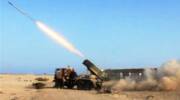The Khayyam satellite would give Tehran the ability to monitor Israel, American troop movements and sensitive facilities throughout the Mideast and Persian Gulf.
By Pesach Benson, United with Israel
Russia announced the successful launch of an Iranian satellite into orbit on Tuesday morning.
The remote sensing satellite, named the Khayyam, contains a high resolution camera which Tehran claims will only be used for civilian purposes. The official line from Iran is that the satellite will be used to survey water resources, improve agricultural output, manage natural disasters, and help monitor the country’s borders.
If the satellite works, it would give Iran the ability to monitor Israel, American troop movements and sensitive facilities throughout the Mideast and Persian Gulf, such as military bases, nuclear sites, shipping lanes, oil refineries and other critical infrastructure.
The Washington Post reported last year that Russia and Iran’s Islamic Revolutionary Guards Corps stuck a secret deal for Moscow to provide Tehran with a spy satellite. According to that Post report, the satellite would be operated by IRGC personnel at a facility in the northern Iranian city of Karaj.
The IRGC is tasked with defending the clerical regime, preventing Iran’s army from seizing power and protecting the Islamic Republic from foreign meddling. It is believed to have more than 250,000 military personnel, and is on the U.S. State Department’s list of Foreign Terrorist Organizations.
The IRGC also spearheads Iran’s relations with proxy militias abroad such as Hamas, Hezbollah and Yemen’s Houthis and is deeply involved in Iran’s nuclear and aerospace programs.
Citing Western intelligence officials, the Post also reported that the camera has a resolution of 1.2 meters, which is short of Western capabilities, but a marked improvement for Iran.
The Khayyam was carried into space on a Soyuz rocket launched from the Baikonur launch facility, which is located in Kazakhstan and leased by Russia.
Media reports suggest that Russia may first use the satellite to spy on Ukraine for a period of time, but Iranian officials said they will maintain control over the Khayyam “from day one.”
The satellite will create headaches for Israel. Israeli officials will have to assume that the Khayyam’s photos will be shared Iran’s regional allies, foremost among them Hezbollah. It may also complicate a potential air strike on Iranian nuclear faclitiies.
Israel has always pressed hard to keep American satellite imagery firms from releasing high resolution photos of the Jewish state. The fear is that more detailed images could be used by terror groups to better target critical Israeli infrastructure, such as the Dimona nuclear reactor, Haifa’s petrochemical facilities, air force bases, or other sensitive sites. Satellite imagery of Israel is regulated by the Kyl-Bingaman Amendment.
Iran’s efforts to put spy satellites in orbit have been set back by a number of failed launches in recent years.
Do You Love Israel? Make a Donation - Show Your Support!
Donate to vital charities that help protect Israeli citizens and inspire millions around the world to support Israel too!
Now more than ever, Israel needs your help to fight and win the war -- including on the battlefield of public opinion.
Antisemitism, anti-Israel bias and boycotts are out of control. Israel's enemies are inciting terror and violence against innocent Israelis and Jews around the world. Help us fight back!























